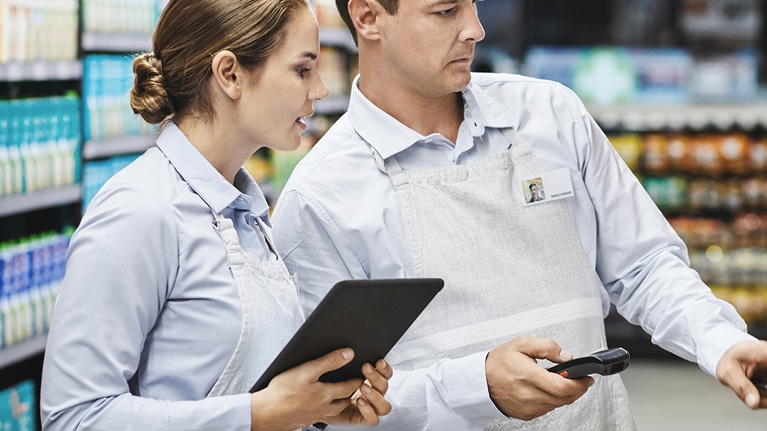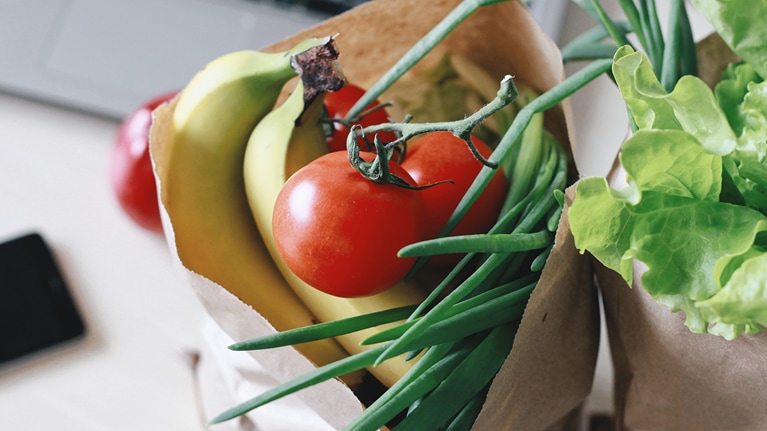The COVID-19 pandemic changed the behavior of consumers in Mexico as it did in other markets around the world. Limited access and mobility restrictions throughout 2021 and into 2022 prompted consumers to test and adopt digital channels while reinforcing the importance of grocery retail as a primary source of basic food, beverages, and personal- and home-care supplies for households across the country.
Today, with coronavirus variants still preventing a full return to past shopping behavior, Mexican grocery retailers are racing to build lasting e-commerce solutions and capabilities. In 2021, the gross merchandise value of modern trade (hypermarkets, supermarkets, and convenience stores) was estimated at more than $20 billion, with online sales claiming a growing share. Pure-play digital grocery companies have emerged, incumbents are strengthening efforts to become true omnichannel players, and last-mile solutions are transforming customer expectations of delivery times for staple grocery and convenience items.
Even traditional retailers such as mom-and-pop stores are changing. These smaller, nonorganized retail players are using their key consumer product–supplier capabilities to build or adopt e-commerce solutions, blurring the lines of who does what in the industry. This shift has also opened the door to digital-native retail players that have already disrupted other markets globally.
Given the continued evolution of the grocery landscape, Mexican grocers must invest to understand the new industry baseline, the consumer shifts observed over the past two years, and the behaviors and preferences that will last once the pandemic recedes. Here, we look at the factors shaping Mexican grocery retail and what players can do to respond to these underlying trends.
What will shape Mexican grocery in 2022 and beyond
In 2020 and early 2021, the COVID-19 pandemic limited access to grocery stores and hurt the pocketbooks of shoppers, many of whom found themselves out of work. The second half of 2021 saw some financial recovery and a gradual easing of restrictions on access to physical shopping channels. Today, grocery shopping continues to evolve, reshaping consumer expectations and grocery retailer value propositions. Our research suggests the Mexican grocery landscape will be shaped by five factors in 2022 and beyond:
Affordability
Affordability will continue to be the priority for shoppers. While consumer spending fell sharply in Mexico in 2020 but stabilized in 2021—and Mexicans are relatively optimistic about a post-COVID-19 economic recovery—about 78 percent of all consumers still feel some economic pressure. This sentiment is especially prevalent among low- and middle-income shoppers, with almost 60 percent of low-income consumers saying they are having a hard time making ends meet or are in crisis.1
And while the number of consumers who said they were trying to find ways to save money dropped from 71 percent in 2020 to 59 percent in 2021, shoppers across different social and economic classes continue to pursue multiple strategies to save money. Notably, 20 percent of consumers changing their shopping behavior are trading down to private-label products, especially in categories such as household cleaning supplies, pasta, hair care, and dairy (Exhibit 1).2

Physical stores in an omnichannel world
Brick-and-mortar stores will regain their importance—but as part of a new omnichannel reality. Consumers were drawn to the convenience and relative safety of online grocery shopping during the pandemic, but about 29 percent of shoppers still prefer personal contact in stores. Other reasons physical stores will retain appeal are high delivery costs and lack of trust in the quality of products received when ordering online.
The growth of online shopping
Even as a segment of consumers remain resistant to online shopping, e-commerce will continue to grow, especially in instant-delivery offerings. The number of Mexican consumers who shopped online on a weekly basis increased by 7 percent in 2021 compared with prepandemic levels of 2020, with weekly visits to grocery stores decreasing by 6 percent.3 And the number of shoppers who bought groceries only by delivery increased by 15 percent during COVID-19.4 In addition, online shoppers have a strong preference for home delivery (80 percent) over click and collect (29 percent).5
Online sales of consumer electronics and books increased strongly compared to prepandemic levels, and a wide range of consumer products saw sales shift to e-commerce channels because of the pandemic—even though overall demand was flat (Exhibit 2).

The rise of discounters
Discounters are gaining attention as they fine-tune their value propositions. In particular, hard-discount stores are gaining in popularity, with consumers’ purchase intent growing by double digits compared with prepandemic levels.6 Hard discounters are well positioned to capitalize on consumers’ strong interest in more affordable products and increasing openness to buying private-label goods. And small regional chains are building a positive perception of hard discounters by enhancing the customer value proposition.
Healthier eating habits
Healthier eating habits, local-first purchasing, and environmental consciousness will continue gaining relevance in the Mexican marketplace. Consumers expect to spend more money on food that is naturally healthy (such as organic foods, those free of synthetics or additives, and products that are minimally processed). More than 50 percent of consumers say buying locally sourced products is important—the greatest change in buying habits—which is up from 7 percent from prepandemic levels.7 And 65 percent of consumers are willing to pay more for healthier, more nutritious products, with particular interest in nutritionally enriched and low-sugar or sugar-free products.
Key considerations for 2022 and beyond
The continuing global pandemic and a high inflation rate are having a big impact on Mexico’s grocery sector today. Online, retailers remain busier than ever, meeting the challenge of fulfilling orders and updating inventory with agility. In physical stores, retailers face shrinking customer traffic and strong online competition on convenience and price.
As Mexican consumers prepare for a postpandemic world, we anticipate the winners and losers in grocery will be determined by more than sheer physical scale and foot traffic. The players will also be defined by competitive differentiation, innovation, and defensibility in six main areas:
Better pricing and more value
Given current inflationary conditions, customers will keep looking to save money, making value a primary motivator in decisions about where to shop. This behavior will underpin how grocers respond, with pricing and promotional effectiveness differentiators to direct traffic to stores and online. Building pricing and promotional capabilities, including harnessing their vast amount of customer-generated data, will give grocers the ability to achieve profitable growth while providing value to customers.
Grocers should also rethink the role of private brands in their product portfolios. Expanding the selection of private-label brands could offer customers products equal in quality to branded goods but at lower prices. This move could attract customers seeking to trade down.
Credibly competing in omnichannel
Building an omnichannel experience will become essential, and we see lines blurring even further between different channels of the retail value chain. Retailers will continue testing, learning, and refining models that solidify customer relationships and increase lifetime customer value. New ways of engaging customers in the digital and physical space and ensuring a seamless experience across channels will become the norm. Retailers able to quickly redefine how they interact with customers will win their loyalty and an increased share of wallet.
Grocers will need to rapidly scale their nascent e-commerce capabilities to meet growing consumer expectations of factors such as website usability, transparency into in-stock products, and better-picked fresh produce, all while grocers work to improve their operating capabilities to ensure profitability. An efficient supply chain, including last-mile delivery capabilities, will be essential for players trying to win in this space.
Personalized shopping experience
In addition to a winning omnichannel value proposition, grocers will need to rapidly build personalization capabilities to capture and retain the growing digital customer base. Ensuring a personalized experience that seeks to maximize customer engagement may be a key differentiator in the market. Success requires grocers to work in agile ways, where commercial, operations, and support functions join to delight the customer and solve for issues across the most relevant customer journeys.
Faster and leaner operating models
Fully embedding new digital and e-commerce capabilities with traditional retail operations will require grocers to reconfigure their organizations, processes, talent, and technology to support new and changing priorities. For example, adopting agile ways of working enables grocers to rapidly respond to customer needs while reallocating internal resources to areas creating the most value. The traditional retail organization will no longer be an option for players hoping to thrive in this new marketplace.
A leaner organization that frees up resources for top priorities will be critical, as will automation and digitalization approaches that ensure the availability of products at the point of sale. This capability will allow for more accurate commercial decisions based on data, context, and consumer behavior. The use of the Internet of Things and devices such as radio frequency identification (RFID) for product tracking will remain important tools, providing decision makers with real-time data to inform commercial and operational strategies.
Business models beyond the core
The race to build ecosystems around the conventional retail value chain will intensify, with players from multiple sectors jumping in. Payment and logistics solutions will lead the pack, quickly becoming the norm and dictating expectations across physical and online channels. Grocers that build a powerful ecosystem will facilitate the expansion of products and services to engage and retain consumers while driving new revenue streams.
Attracting and retaining talent
The battle for talent will intensify in Mexico, particularly the competition for employees who can build digital capabilities for traditional grocer operations. Other sectors, including banking and fintech, are also rapidly building digital capabilities and will draw from the same talent pool. Developers, designers, and product owners, among others, are all in demand. Digital winners will need to attract and retain this top talent. A redefined employee value proposition—including compensation; career plans; work space and flexibility; and diversity, equity, and inclusion policies—will be differentiators for players upgrading their talent bench.
The Mexican grocery sector is at a critical moment in its history. The pandemic and economic uncertainty are forcing grocers to revisit their commercial and operational strategies and to accelerate their digital transformations. To succeed in a tumultuous marketplace, companies must focus on competitive differentiation, innovation, and defensibility.
Download the full report here.

